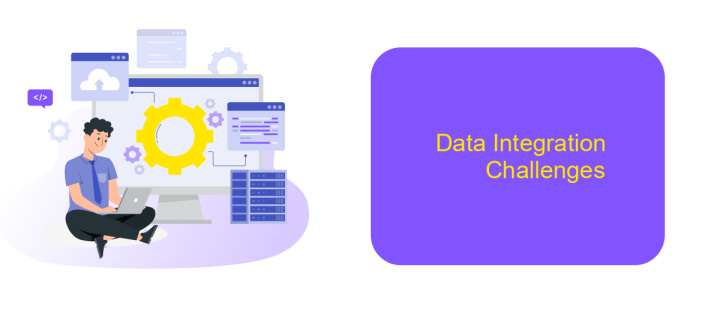Integration Data Model
In today's data-driven world, the integration of disparate data sources is crucial for informed decision-making and operational efficiency. An Integration Data Model serves as a blueprint that facilitates the seamless merging of data from various systems, ensuring consistency, accuracy, and accessibility. This article explores the fundamentals of Integration Data Models, their significance, and best practices for successful implementation.
Introduction
In today's data-driven world, the ability to seamlessly integrate disparate data sources is crucial for businesses aiming to make informed decisions. An Integration Data Model (IDM) serves as a blueprint for combining data from various systems, enabling unified access and analysis. This approach not only enhances data consistency but also supports scalability and flexibility in data management. By leveraging an IDM, organizations can streamline their data workflows and ensure that critical insights are readily available.
- Facilitates unified data access
- Enhances data consistency
- Supports scalability and flexibility
- Streamlines data workflows
- Enables informed decision-making
Implementing an Integration Data Model involves understanding the unique requirements of your organization and the specific data sources involved. It requires careful planning and execution to ensure that the integrated data is accurate, reliable, and accessible. As businesses continue to evolve, the role of a well-designed IDM becomes increasingly vital in maintaining competitive advantage through data-driven strategies.
Data Model Design Principles

Effective data model design is crucial for seamless integration and optimal data management. One of the fundamental principles is ensuring data consistency and accuracy across all integrated systems. This requires a well-thought-out schema that minimizes redundancy and enforces data integrity through constraints and relationships. Utilizing standardized data formats and naming conventions can significantly enhance compatibility and reduce the potential for errors during data exchange.
Another key principle is scalability and flexibility. As business needs evolve, the data model should be adaptable to accommodate new data sources and integration requirements without necessitating major overhauls. Tools like ApiX-Drive can facilitate this by providing a robust platform for automating and managing integrations. By leveraging such services, organizations can streamline the integration process, ensuring that the data model remains efficient and responsive to changes in the business environment.
Data Model Components

Data models are essential for structuring and organizing data in a coherent manner, ensuring seamless integration and analysis. They provide a blueprint for how data is stored, connected, and accessed within a system. Understanding the components of a data model is crucial for effective data management and utilization.
- Entities: These are objects or concepts that represent data points, such as customers, products, or orders.
- Attributes: These are properties or details about entities, like a customer's name, product price, or order date.
- Relationships: These define how entities are connected, such as a customer placing an order or a product being part of a category.
- Constraints: These are rules that ensure data integrity and accuracy, such as unique identifiers or mandatory fields.
- Indexes: These are used to improve the speed of data retrieval operations by creating quick lookup references.
By understanding and implementing these components, organizations can create robust data models that facilitate efficient data integration and support comprehensive data analysis. This ensures that data is not only stored correctly but also readily accessible and usable for various business needs.
Data Integration Challenges

Data integration is a critical aspect of modern data management, but it comes with a range of challenges that organizations must navigate. One of the primary issues is data inconsistency, where data from different sources may conflict or be formatted differently, making it difficult to consolidate.
Another significant challenge is data quality. Ensuring that integrated data is accurate, complete, and up-to-date is essential for reliable decision-making. Poor data quality can lead to erroneous insights and ultimately affect business outcomes.
- Data inconsistency across sources
- Ensuring data quality and accuracy
- Managing data security and privacy
- Handling large volumes of data
- Complexity of data transformation processes
Additionally, maintaining data security and privacy during integration processes is paramount. Organizations must ensure that sensitive information is protected against unauthorized access. Moreover, the sheer volume of data and the complexity of data transformation processes add layers of difficulty to achieving seamless integration. Addressing these challenges requires robust strategies and advanced technologies.
- Automate the work of an online store or landing
- Empower through integration
- Don't spend money on programmers and integrators
- Save time by automating routine tasks
Best Practices for Data Model Integration
Effective data model integration requires a well-thought-out strategy to ensure seamless data flow and consistency across systems. Begin by clearly defining the objectives and requirements of the integration. This includes identifying the data sources, understanding the data formats, and determining the frequency of data updates. Utilize standardized data formats and protocols to facilitate smooth communication between different systems. Additionally, ensure that data validation and transformation processes are in place to maintain data quality and integrity.
Leveraging integration platforms like ApiX-Drive can significantly simplify the process. ApiX-Drive offers a user-friendly interface and supports a wide range of applications and services, enabling efficient data synchronization without extensive coding. It’s crucial to regularly monitor and maintain the integration to address any issues that may arise and to adapt to any changes in the data sources or requirements. Implementing robust security measures is also essential to protect sensitive data during transmission and storage. By following these best practices, organizations can achieve reliable and efficient data model integration.
FAQ
What is an Integration Data Model?
Why is an Integration Data Model important?
How can I implement an Integration Data Model in my organization?
What challenges might I face when creating an Integration Data Model?
How can I ensure data security in an Integration Data Model?
Time is the most valuable resource for business today. Almost half of it is wasted on routine tasks. Your employees are constantly forced to perform monotonous tasks that are difficult to classify as important and specialized. You can leave everything as it is by hiring additional employees, or you can automate most of the business processes using the ApiX-Drive online connector to get rid of unnecessary time and money expenses once and for all. The choice is yours!


